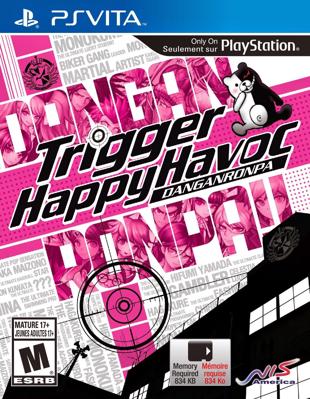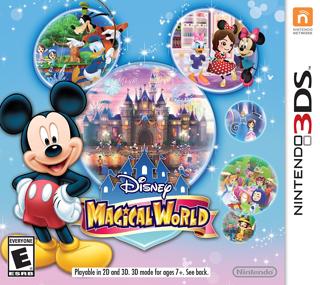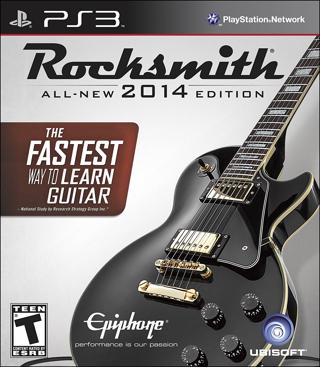Tweet
As a working adult with more money than time, this is how I see most E3 announcements: https://www.buttersafe.com/2015/06/16/the-new-thing-3/ Ah well; back to Dr. Mario.
0 CommentsAs a working adult with more money than time, this is how I see most E3 announcements: https://www.buttersafe.com/2015/06/16/the-new-thing-3/ Ah well; back to Dr. Mario.
0 CommentsIron Man is a jerk.
0 CommentsJust paid ten bucks for a Kindle book so I could quote a single paragraph I read a decade ago in an upcoming Pixel Poppers post. #bloglife
0 CommentsWe are now in an era where entire game platforms (including re-downloads of things you’ve bought) can just vanish. http://community.us.playstation.com/t5/PlayStation-Mobile-Support/INFO-Update-on-PlayStation-Mobile-PSM/td-p/45023971
0 CommentsThe debate has been over for a while now. Video games are art.
I knew it was over not when the National Endowment for the Arts added grants for games, or even when the US Supreme Court ruled that video games are protected speech. I knew it was over because of a newspaper clipping my grandmother sent me.
It was from a column called “The Arty Semite,” and it discussed the then-upcoming Biblically-inspired game El Shaddai: Ascension of the Metatron. (Full post here.) It didn’t make the argument that talking about heavy stuff like the Bible sure is artistic. It didn’t claim that this represented a step forward in the expressive significance of video games. It just said hey, here’s an interesting upcoming game. In a column about the arts.
In other words, my grandmother sent me a newspaper clipping that took it for granted that games are art. That’s how I knew.
Why was this debate so long-lived and vitriolic? “Are video games art?” seems like such a straightforward question. The problem is that it’s really two very different questions. The first is, “Is the medium of video games capable of artistic expression?”
This is the more useful question, and also the simpler one. It’s a matter of definition - if your definition of art precludes interaction (as did Roger Ebert’s) then video games can’t be art. Period. It’s not a judgment on video games, or an insult, or anything remotely offensive - it’s just the logical implication of the terms involved. It’s just what the words mean.
My answer to this first question is: “Yes, duh, of course the medium of video games is capable of artistic expression. Games can be beautiful, they can impart emotion, they can convey messages. What more do you want?”
The second question is, “Have any video games yet been made that can be considered profound works of great art?”
It happened so gradually, I’m really not sure when Steam became a F2P MMO. It’s easily the best one, though.
0 CommentsDanganronpa: Trigger Happy Havoc is overrated.
The game is basically fine. It oozes personality with a distinctive aesthetic that’s serviceable at worst and compelling at best. It boasts some clever twists and well-done mysteries. It’s also a bizarre mishmash of mechanics, some of which work and some of which don’t (the “Re: Action” system is flat-out the worst attempt at conversation branching I have ever seen in a game) featuring paper-thin characters and a bevy of plot holes. (There are also a few moments that are shockingly insensitive or offensive, but that’s another story.) It borrows heavily from influences including Ace Attorney, Zero Escape, Persona 4, and Battle Royale, but almost always in shallow ways that fail to emulate what made them great. The end result is entertaining, flashy, and kind of dumb.

[Gamasutra:] A lot of the characters fit into really strong stereotypes. The concept of being “The Ultimate” whatever means they stand out as stereotypes. Can you talk about why you went in that direction?
[Game Producer Yoshinori Terasawa]: What were we thinking about? It’s hard to answer that! [laughs] The scenario writer, Kazutaka Kodaka, he’s the one who basically thought of those stereotypes, and he created those characters. He’s the one who thought it up. When I spoke to Mr. Kodaka, I requested that he make [the player character] Makoto as non-special as possible, and make the other characters stand out in their own way a lot, and that’s why there’s this balance. That’s how Mr. Kodaka was able to create these characters.
Unlike a lot of other visual novels, there are a lot of other gameplay elements such as free exploration, and the trials having multiple different gameplay elements. Did that grow from the story or did those ideas come first?
YT: It was originally a basic visual novel, but visual novel games are not that popular in Japan anymore, either. So we figured that if Dangan Ronpa were to be just a visual novel, it would not be as popular we wanted it to be, these days. So that’s why, in order to show that the game is really interesting, we decided to add a lot of different features – after the scenario was written.
—Christian Nutt, Dangan Ronpa: Death, stress, and standing out from the crowd
Still, there’s a ton of potential here. If they’ve learned from their missteps, the sequel could be amazing. So we just have to wait for the Danganronpa 2: Goodbye Despair reviews, right?

Remember when Assassin’s Creed was about making you feel like an assassin?
0 Comments
Some time later, I thought of taking up the axe again, rescuing my dusty guitar from where she was languishing in the corner of my bedroom. I got another nudge in this direction when a musically-inclined woman on OkCupid called me out on my profile photo where I’m holding a guitar. (“Can you actually play, or is that just to impress the ladies?” “It’s to impress the ladies. Is it working?") Then Rocksmith 2014 went on sale and I read a glowing review of it, and I took the plunge.
(Incidentally, this is the first game I’ve ever played where I thought, “Man, I actually wish I were playing this with a Kinect.” It’s obnoxious to have to take your hands off the guitar and grab a controller to do basically anything. It would be amazing to be able to just say “Riff repeater, 50% speed!” and have it drop into the riff repeater at 50% speed.)
The game advises you to play for an hour every day, which I tried hard to stick to. Daily play was easy enough to achieve, but I didn’t always manage to last a full hour. At first, it was because I felt like I was learning a lot very quickly, and needed to take a break to digest. But after a few days, it was because I was getting frustrated.